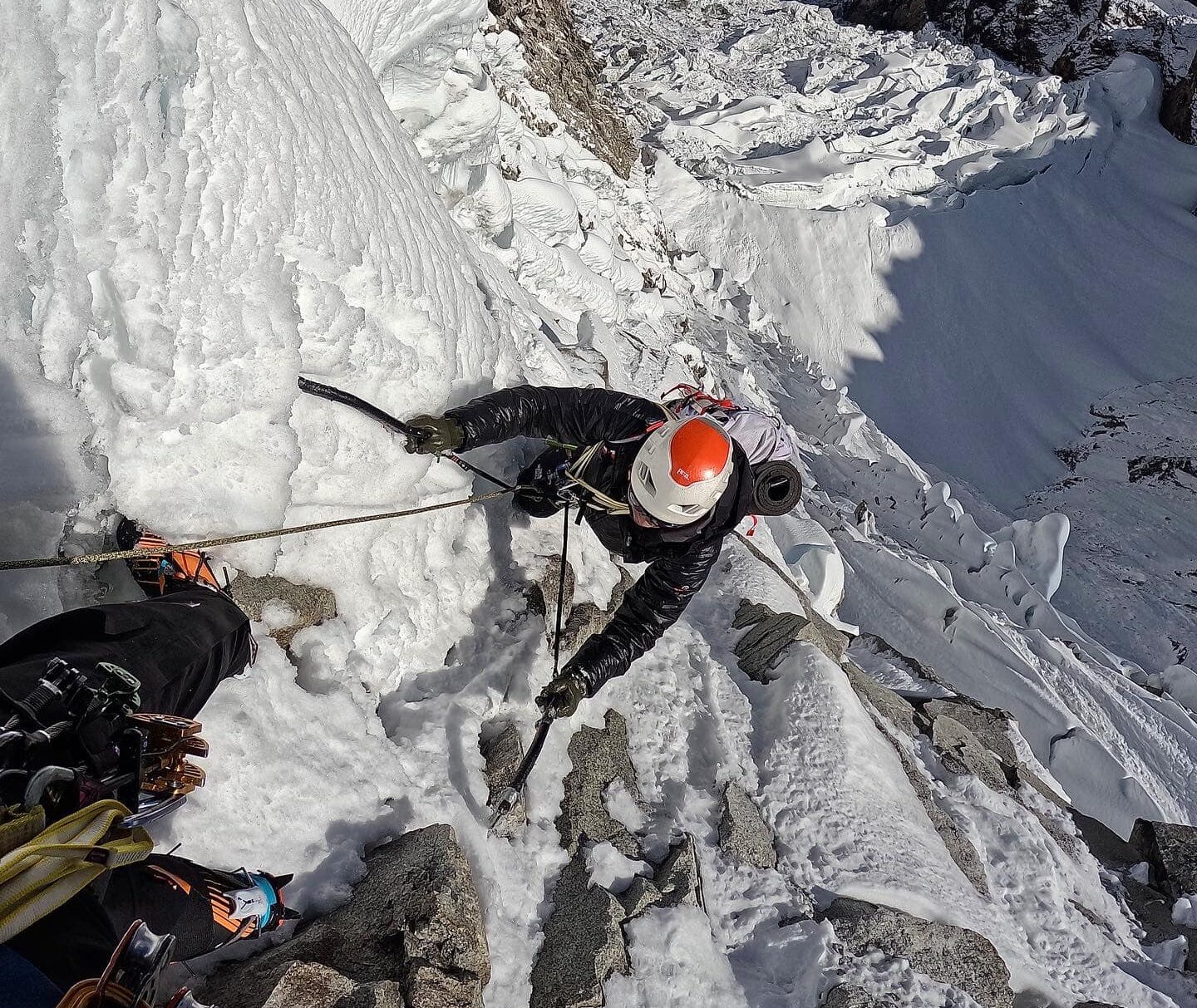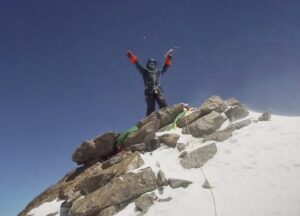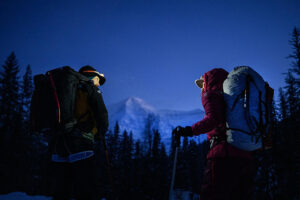Climbing teams are busy in Peru’s Cordillera Blanca despite dry conditions, which have turned some mixed routes into straight rock climbs.
“I may never be able to complete such a difficult and dangerous climb again in my life,” wrote Yudai Suzuki after returning safely — despite a 15m fall — from a new line on Quitaraju (6,036m).
The ace Japanese climber has done many other highly difficult routes throughout his career. Only last year, he completed the formidable Moonflower Buttress on Alaska’s Mount Hunter, Ausangate’s North Face in the Andes, and the northwest ridge of Ghamubar Zom in Pakistan.
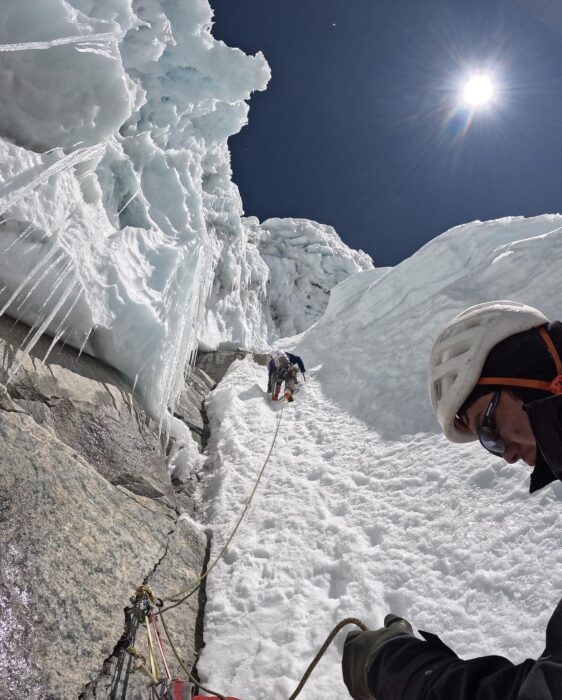
Ice funnels on the upper sections. Photo: Yudai Suzuki
Now Suzuki, with partners Keisuke Ohkura and Kazumasa Ostubo, climbed Dream House, a 1,240m monster route that they graded as M6, AI5+, A2, R/X, VI up the south face and the west ridge of the mountain.
“The route includes 30 pitches, and none of them were easy,” Suzuki admitted.
White Godzilla
“I thought we would be able to speed up once we crossed the technical south face on the first day,” said Suzuki. “But the crux of the climb happened to be the whole ridge beyond that, which looked like a White Godzilla’s back.”
Climbing on sight, the team eventually feared they might have reached a dead end. Miraculously, at the last moment, they found some ice funnels that allowed them to progress further.
“I took a 15m fall on a sketchy 90° snow-ice section at 5,900m, but we somehow passed that part,” Suzuki added.
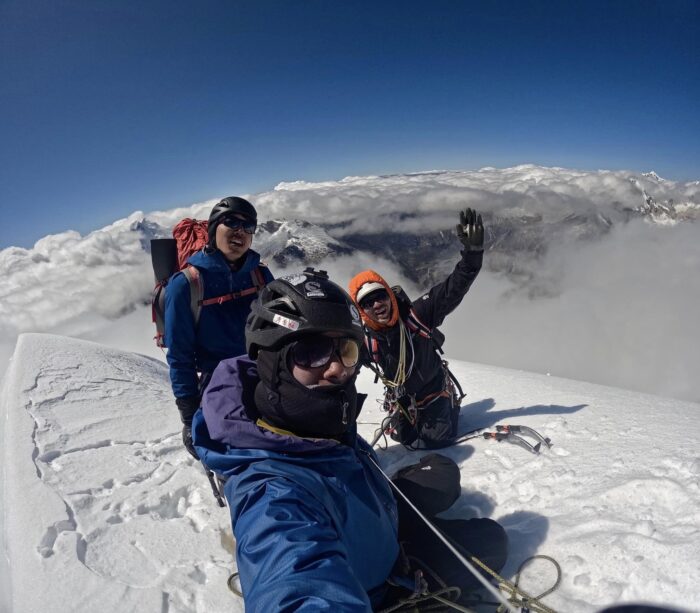
Triumphant on the summit of Quitaraju. Photo: Yudai Suzuki
“I am so filled with an indescribable feeling of having…been able to draw such a beautiful and adventurous big line in alpine style, with no trial attempt,” he said.
Suzuki noted that the southeast ridge of the peak, which the climbers eventually followed to the summit, was probably climbed about 40 years ago.
“We could find little information about it, and the conditions seem to have changed significantly since that time,” Suzuki said.
Slovak climbers adapt to rock

The Slovaks celebrate their new routes at a local restaurant. Photo: Instagram
Marek Radovsky and Juraj Svingal of Slovakia ventured into the Tuctubamba Valley of Peru’s Cordillera Blanca at the beginning of June, hoping to open some routes on mixed terrain. Instead, they found themselves surrounded by bare rock spires.
They quickly adapted to the new, drier circumstances and bagged a first ascent of a 4,950m rock tower on Nevado Tauar. The 340m line featured difficulties up to 7a. They also opened two other slightly easier routes on a wall they found during an exploratory trip, 20 minutes from a lake called Laguna Suyrococha.

The Tuctubamba region, circled in red. Not all place names in the story appear on this topo.
The Slovakian climbers did find some mixed climbing on the south face of 5,888m Ocshapalca in the Llaca Valley.
“We chose a line and went for it on June 9 in the early morning,” the team told Up Climbing. “The ice climbing alternated with mixed pitches, each more beautiful than the previous one.”
The return trip took them 16 hours, and they rated the 12-pitch,600m line M7, WI5, 90º.
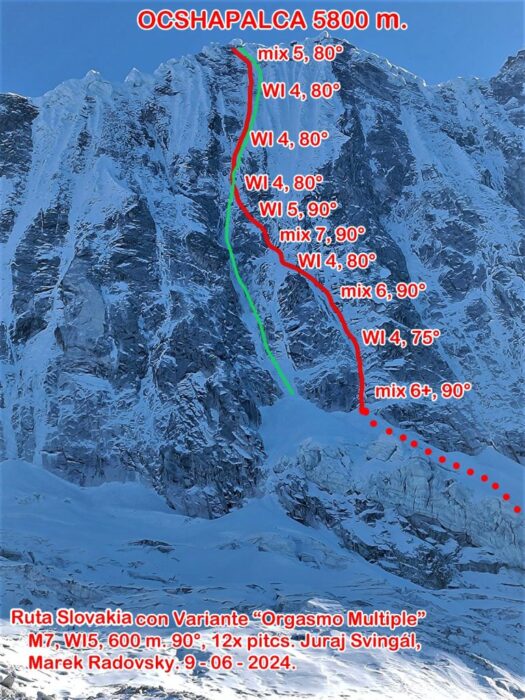
Topo of the new Slovakian route. Photo: Marek Caci Radovsky
